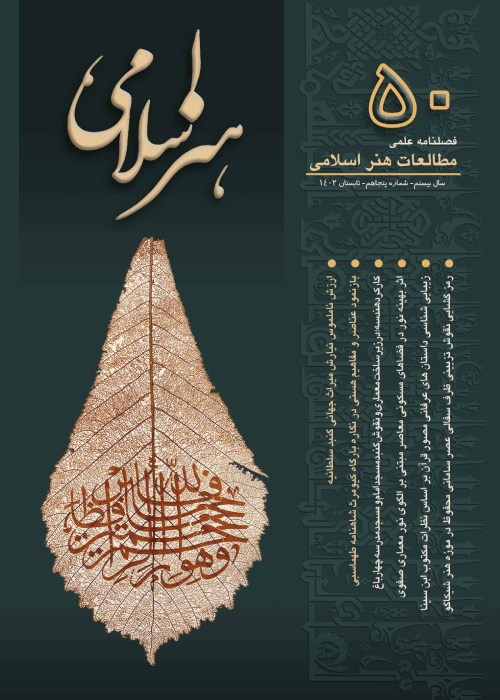Reviewing the Decorative of Timurid Qur ans and the Tile-work of the Goharshad Mosque of Mashhad.
Author(s):
Abstract:
Khorasan, a valuable land with immense vastness has witnessed the rise and fall of numerous monarchies; hence, it has had a definitive role in the historical and cultural happenings in Persia, particularly, in the field of art. The major cities of this region such as Mashhad, Neishabur, Herat, and Samarqand were the key centers for the production of artworks and each city has its own valuable history in the creation of such artworks. Historical monuments, rug weaving, pottery and tile-works were among the many arts that were created and pioneered in the region.It is also worth mentioning that one of the most glorious ages of this region was inherently during the reign of Timur and his sons in Mashhad and Herat. During his reign, arts flourished and the use of decorative herbaceous-floral and geometrical motifs embedded with calligraphy developed extensively. Such celebrated designs were used not only on pages of Qur’anic manuscripts but also adorned the colorful tiles on historical monuments. In this paper, by considering the role and place of Khorasan in Persia; the illustrations and illuminations of Qur’anic manuscripts of Herat preserved in museums and collections worldwide including the National museum of Iran, Detorit museum, The Turkish and Islamic museum of Istanbul, Metropolitan museum, Astan-e Gods museum, Khalili collection and Chester Beatty museum- and the tile-works of the Goharshad mosque of Mashhad will be analyzed according to art techniques such as arabesque patterns, khatai designs, and geometric forms. The results indicate that the designs and patterns are supple on both tiles and manuscripts; furthermore, the harmony between the patterns on the illuminations of Herat and the designs of the colorful tiles of Goharshad mosque indicate that the designers, illuminators, and tile-workers of both areas worked in coordination.
Objectives
Classifying and comparing the decorative motifs used in the Timurid illuminated Qur’ans and in the tiles of Mashhad Goharshad Mosque. Collation and comparing the decorative motifs applied on the illuminations and the tile- works based on visual and decorative features. Questions:What forms of visual decorative features are observed in Timurid Qur’ans and in decorative ornamentation of Goharshad Mosque? What are the similarities and dissimilaritiesbetween the decorative designs of Herat’s illuminations and those of the tile-works on the Goharshad Mosque of Mashhad?Language:
Persian
Published:
Islamic Art, Volume:8 Issue: 15, 2012
Pages:
53 to 72
magiran.com/p986103
دانلود و مطالعه متن این مقاله با یکی از روشهای زیر امکان پذیر است:
اشتراک شخصی
با عضویت و پرداخت آنلاین حق اشتراک یکساله به مبلغ 1,390,000ريال میتوانید 70 عنوان مطلب دانلود کنید!
اشتراک سازمانی
به کتابخانه دانشگاه یا محل کار خود پیشنهاد کنید تا اشتراک سازمانی این پایگاه را برای دسترسی نامحدود همه کاربران به متن مطالب تهیه نمایند!
توجه!
- حق عضویت دریافتی صرف حمایت از نشریات عضو و نگهداری، تکمیل و توسعه مگیران میشود.
- پرداخت حق اشتراک و دانلود مقالات اجازه بازنشر آن در سایر رسانههای چاپی و دیجیتال را به کاربر نمیدهد.
In order to view content subscription is required
Personal subscription
Subscribe magiran.com for 70 € euros via PayPal and download 70 articles during a year.
Organization subscription
Please contact us to subscribe your university or library for unlimited access!


